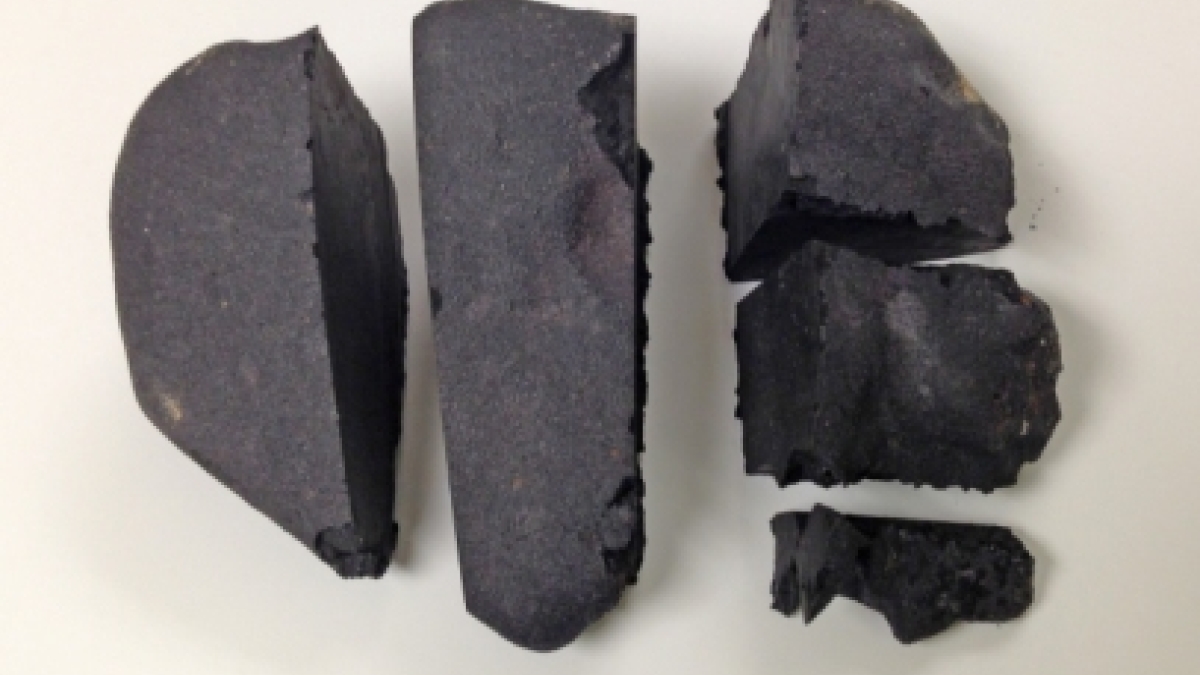Rare meteorite preserved for present, future scientists

The main mass of a rare meteorite that exploded over California’s Sierra foothills in April 2012 will be preserved for current and future scientific discoveries, thanks to the collaborative efforts of five U.S. academic institutions.
The meteorite has found a permanent home among: Arizona State University in Tempe; the Smithsonian Institution’s National Museum of Natural History in Washington, D.C.; American Museum of Natural History in New York City; The Field Museum of Natural History in Chicago; and the University of California, Davis. Together, the institutions have successfully acquired the biggest known portion of the Sutter’s Mill meteorite.
The meteorite is considered to be one of the rarest types to hit the Earth – a carbonaceous chondrite containing cosmic dust and presolar materials that helped form the planets of the solar system.
Its acquisition signifies enhanced research opportunities for each institution and ensures that future scientists can study the meteorite for years to come.
“The joint acquisition of this rare and scientifically important meteorite by five major research institutions represents a winning situation for all concerned,” said Meenakshi Wadhwa, director of the Center for Meteorite Studies at ASU. “Each of us is wholly committed to maximizing the scientific value of this meteorite and to preserving and caring for it so that it will be available to future generations of scientists.”
The meteorite formed about 4.5 billion years ago. While it fell to Earth roughly the size of a minivan before exploding as a fireball, less than 950 grams have been found. Its main mass weighs just 205 grams (less than half a pound) and is about the size of a human palm.
The main mass was X-rayed by a CT scan at the UC Davis Center for Molecular and Genomic Imaging. This was the first time a meteorite acquisition was CT scanned before its division among a consortium of institutes, allowing prior knowledge of each piece’s contents. Then it was cut into five portions, reflective of each institution’s investment, before being delivered to the institutions.
The portion of the main mass acquired by each institution includes:
• American Museum of Natural History: 34 percent
• Smithsonian Institution’s National Museum of Natural History: 32 percent
• The Field Museum of Natural History: 16 percent
• Arizona State University: 13 percent
• UC Davis: 5 percent
When the meteorite landed near Sutter’s Mill, the gold discovery site that sparked the California Gold Rush, it spurred a scientific gold rush of sorts, with researchers, collectors and interested citizens scouring the landscape for fragments of meteorite. The institutions that have acquired the main mass were among those that acted on this rare scientific opportunity to gain insights about the origins of life and the formation of the planets.
Several months following the fall of the Sutter’s Mill meteorite, ASU’s Wadhwa learned that the main mass was owned by Robert Haag, a well-known meteorite collector residing in Tucson, Ariz. On speaking with Haag, who has a long-standing interest in meteorites and has previously collaborated with researchers, she found that he was willing to make the meteorite available for sale to research institutions. She then contacted the other four institutions to initiate its joint acquisition.
According to Wadhwa, “The collaborative way in which the five institutions acquired and apportioned this sample, and Bob Haag’s willingness to cooperate with us as we conducted the CT scanning and subdivision, were instrumental in making this acquisition possible.”
Prior to obtaining a portion of the main mass of Sutter’s Mill, ASU had been able to acquire several small fragments of this important meteorite. Laurence Garvie, collections manager in the Center for Meteorite Studies, has been studying the mineralogy and chemistry of this material to understand the formation history of the parent asteroid from which it originated.
ASU’s Center for Meteorite Studies, which currently houses almost 2,000 distinct meteorites, is one of the largest university-based collections in the world. The center’s mission since its inception in 1961 has been to pursue new knowledge about the origin of our solar system and planets through studies of meteorites and other planetary materials, and to sharing this knowledge with a broad audience. The acquisition of nearly ~25 grams of the main mass for the center’s world-class meteorite collection will allow further detailed studies on this important meteorite, not only by ASU researchers, but also by other scientists across the globe.
Involvement from the other institutions included:
• UC Davis, located 60 miles west of Sutter’s Mill, provided local outreach and education for meteorite donations, and confirmed for the original discoverer of the meteorite’s main mass that it was carbonaceous chondrite. The university also X-rayed the meteorite and determined its age and chemical composition.
• The Smithsonian Institution cut the mass into five portions.
• The American Museum of Natural History worked closely with UC Davis geology professor Qing-zhu Yin to secure specimens of Sutter’s Mill right after its fall, and performed nondestructive computed tomography (CT) scans of several specimens kindly loaned by their finders. These scans were used to determine the density of several samples to a very high accuracy, confirming the type of meteorite represented by Sutter’s Mill.
• The Field Museum of Natural History found several presolar stardust grains in two smaller pieces of Sutter’s Mill donated by private meteorite collector Terry Boudreaux. Presolar stardust grains are the oldest solid samples available to any lab and are essentially time capsules from before the solar system formed, 4.6 billion years ago.